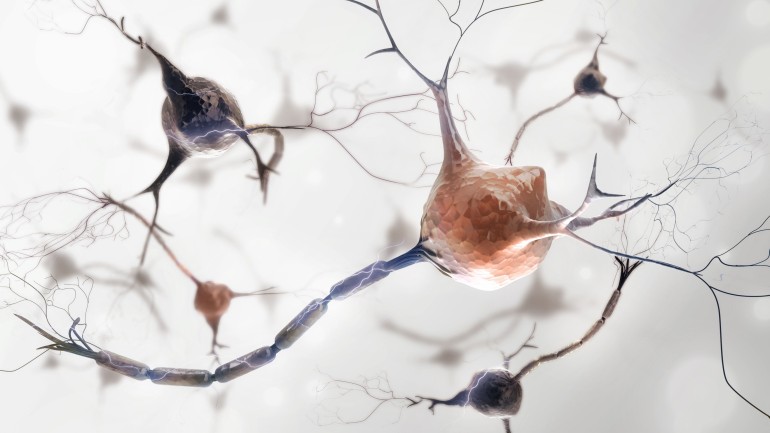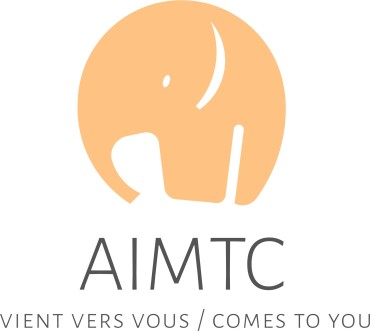« Medicine is the art of imitating the
curative processes of nature » - Hippocrate
Trophic and neurotrophic factors
September 23rd, 2019
When I decided to create a post on neurons, I looked in the Internet and I found so many posts on neurons, I was wondering what I could say about them that could be new... Of course, some neurons are long, very long cells. They can be longer than the peripheral nerve which contains them. Compared to the size of a "normal" animal cells, which is approximately around 20 µm, the neuron has a lot more membrane to take care of.
So, nature has done the things wonderfully. The central nervous system represents approximately 2% of the body weight yet, it consumes between 20 and 25% of all glucose and oxygen that is available, night and day. Imagine this: you invite 100 friends to your annual BBQ party. You have prepared (hopefully not alone) tons of food and good things that you present on a nice long table. So now, two of your guests, rather thin and skinny, arrive and they eat 1/4 of the delicious buffet. Hopefully your other guests are not so hungry!! Lesson 1: we do not eat to have strong muscles and bones, we eat to feed this starving nervous system.
But it is not enough for them. They still need something else: neurotrophic factors. "Trophic" is sometimes used for "neurotrophic" in some books, research and websites.
But if we say that "trophic" refers to the nutrition of a tissue, then "neurotrophic" will refer to the nutrition of the neurones. This is what we want, whether the neurotrophic factor comes from the target cell and is carried by retrograde axonal transport (nerve growth factor "NGF") or from the brain and also carried by retrograde axonal transport (brain-derived neurotrophic factor "BDNF").
Neurotrophic factors: "The primary function of neurotrophic factors is to mediate information to the neuronal soma about the quality of the connection between a neuron and its target." (Castrén E. (2013) Trophic Factors: Neurotrophic Factors. In: Pfaff
D.W. (eds) Neuroscience in the 21st Century. Springer, New York, NY)
It is so interesting: the neurotrophic factors are released from the target cells, taken up by the presynaptic axon terminals and transported to the cell body (neuronal soma).
This is done by retrograde axonal transport. The neuronal soma is then informed of the good connection between the neuron and the target cell. If the connection is not good and that the cell body does not receive sufficient neurotrophic factors, the neuron will degenerate.
So, the retrograde axonal transport will not only carry the metabolic waste products from the cell to the soma to be transformed, but will also carry important molecules that are necessary for the cell survival, at the speed of 200-300 mm per day. (https://cellbiology.med.unsw.edu.au/cellbiology/index.php/2014_Group_4_Project#Fa st_Anterograde_Transport)
The anterograde axonal transport will carry material produced in the cell body along the microtubule tracks, from the soma to the ending of the neuron, at the speed of 200 to 400 mm per day. This includes enzymes, neurotransmitters, neuropeptides and membranous lipids, to be used for cellular membrane and nerve ending repairs. But there is also a specific nerve fibre that will release some substances in its ending environment: the peptidergic type C fibres.
Trophic factors: We said that the trophic factors are related to the nutrition of a tissue. Here, the substances that are released in the environment from the type C fibres are chemical substances that will promote neurogenic inflammation: substance P and CGRP (Calcitonin Gene Related Peptide). At first sight, this does not look so nutritious... But it will promote healing: "The process is called neurogenic inflammation. This is a sterile and usually useful inflammatory process. Overall, it encourages healing and beneficial immune system responses including the migration of leucocytes to the injury site". (The sensitive nervous system, David S Butler, Ed D, B Phty, GDAMt, M App Sc, Pt.)
So, maybe we could consider the trophic factors the substances coming from the neural soma transported by anterograde axonal transport to reach the target cells and neurotrophic factors the substances entering the neurons to reach the soma transported by retrograde axonal transport.
One last point: after a treatment, if the patients still feel pain, we all tell them that it is normal that the pain car remain for one or two days. Looking at the speed of the axonal transport, isn't it the time it would take to the soma to produce and send all the material to the C fibre nerve ending to "repair" it and make it less sensitive?

Trainings with Louise Tremblay in Montreal (English and/or French and/or Spanish)
Bowen, module 1, January 9 to 12, 2020
Bowen, module 2, April 16 to 19, 2020
DermoNeuroModulation, January 16 to 19, 2020
Niromathé, January 23 to 26, 2020
Registration and more training sessions: www.aimtc.ca Contact: Louise Tremblay / 514-523-3575 / info@aimtc.ca
